Today in the traditional Roman calendar it is the feast of the 3rd c. Sicilian martyrs St. Placid and companions, slain during the reign of the Emperor Diocletian.
Today in the revised calendar is the feast of Sts. Placid and Maurus, companions of St. Benedict in the 6th c.
The saints are sometimes confused and both have their feast on 5 October.
Here is the Vatican Curia’s calendar.
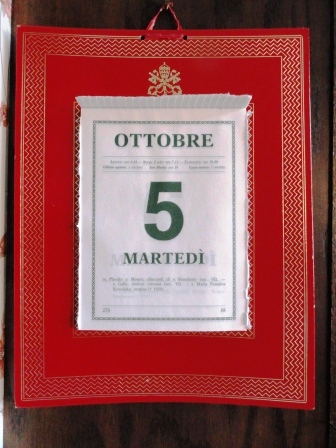
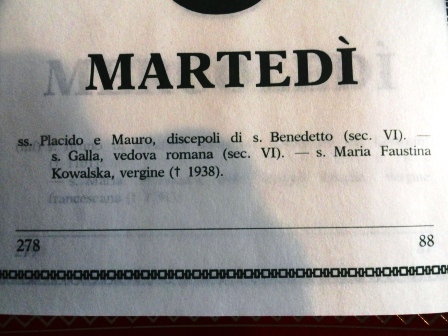
Here is the entry in the 2005 Martyrologium Romanum.
5. Commemoratio sancti Placidi, monachi, qui inde a pueritia carissimus fuit discipulus sancti Benedicti.
Here is the entry in the1878 Martyrologium Romanum.
Messanae in Sicilia natalis sanctorum Martyrum Placidi Monachi, discipuli beati Benedicti Abbatis, et fratrum eius Eutychii et Victorini, ac Flaviae Virginis eorum sororis; item Donati Firmati Diaconi, Faisti, aliorumque trignita Monachorum, qui a Manucha pirata pro Christi fide necati sunt.
I have always had an interest in St. Placid, the Benedictine of the 6th c., because of a book I found during a retreat when I was in seminary. The book is called La vie de petit st Placid… The Life of Little St. Placid by Mother Geneviève Gallois. I have it in French and in English.
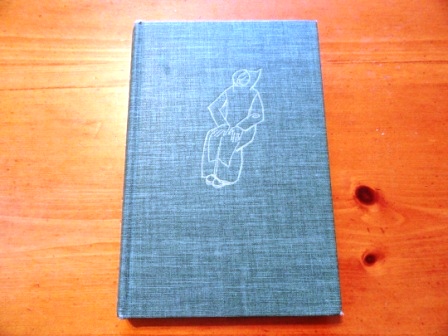
A sister name Placida came to Mother Geneviève and asked her to draw her a picture. Mother drew 104 and thus the book was born. It is a work of deep spiritual value and nearly painful charm.
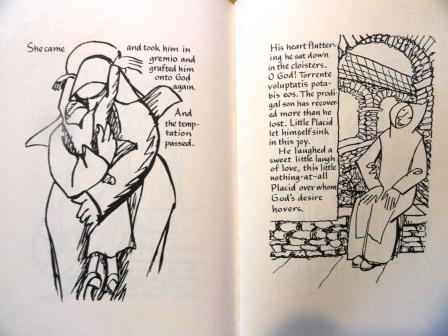
Mother Genevieve, who had come from an extremely anti-clerical background, was a talented painter. She had bad health and a hard time when at 23 she entered the convent of the Les Bénédictines de la rue Monsieur (20 rue Monsieur in the 7e arrondissement). She wound up being a novice for 22 year, in fact.
Here is one of her paintings.
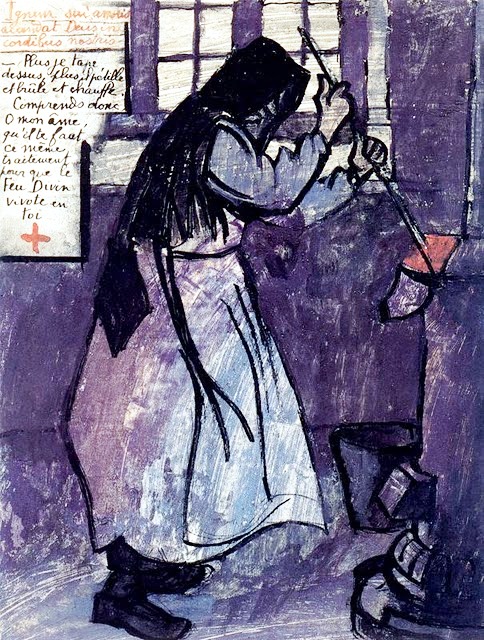
A couple more images from the book.
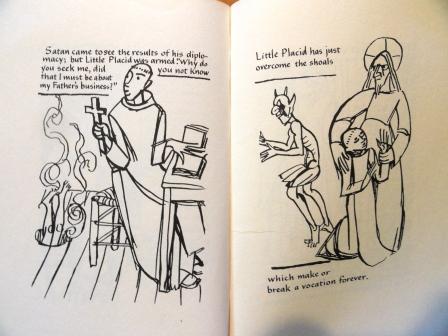
About Mass. Click to enlarge.
Here

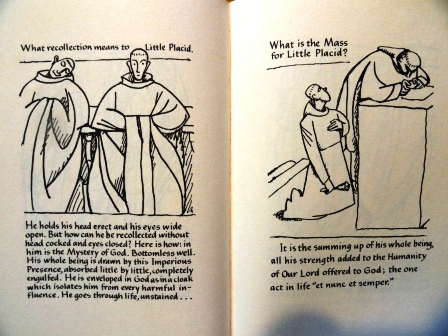

































It’s also the feast of Saint Faustina, who received the apparitions of Our Lord of Divine Mercy.
I celebrated Mass this morning in her honor. Blessed feast day!
What a splendid artist! You can tell she’s French by the solidity of the forms, and how feet and hands are more important even than faces – though the faces are French too. I love the watercolor sketch of the sister stoking the fire — what strength! what beauty!
Wonderful book! The drawings and water color are wonderful. I enjoy books, especially older books, especially Catholic books. (:^D) I have several older Catholic devotional books (late 19C-early 20C) in French and German (and some English of course) from our family predecessors. Some of the books are just gorgeous in their detail and wonderful in the language and clarity of the Faith. I can’t read German, however.
Also Blessed Francis Xavier Seelos, C.Ss.R.
The lettering in the text of the biography of St. Placidus looks almost like an illuminated manuscript.
‘A novice for 22 YEARS’? Holy cow-her family must have been REALLY anti-clerical!
At the University of Dallas, Father Placid, O.Cist., was chairman of the Classics Department (and directed my work on my senior paper on prose rhythm in the sermons of St. Cæsarius of Arles). He was truly a placid man, pious and kind, universally loved by all who knew him. He died a few years ago: requiescat in pace Domini.
Thank you Fr Z for the information on St Placid and those delightful drawings.
I knew nothing about him although when in Paris going through the Metro station of St Placide I had occasionally wondered who he was. But there are a number of stations on the Paris underground (subway) named after Saints and strangely I don’t think anyone complains there in spite of Church and State being separate. I have always presumed these are named after a church nearby either still there or having been once on the site.
Other stations in Paris with a religious theme include Filles du Calvaire (Daughters of Calvary), Abbesses, and, one which I am very familiar with but which I am ashamed to say I have never looked up the details of, Cardinal Lemoine. He must have been noteworthy as I don’t think there are any other Cardinals on the Paris Metro.